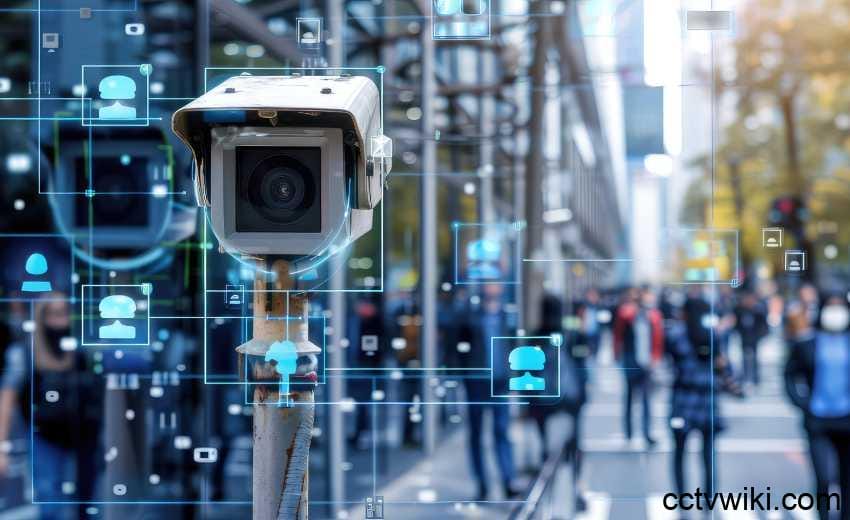Fortifying the Perimeter: Why Multi-Sensor Systems are the Future of Security
As the demands of physical security intensify, integrators and consultants are increasingly turning to a sophisticated approach: multi-sensor systems designed to create an impenetrable perimeter.
By combining the strengths of video surveillance, thermal imaging, radar, and fiber-optic vibration sensing, these systems are achieving unprecedented levels of accuracy, scalability, and reliability, while simultaneously tackling the age-old problem of false alarms.
Wenson Zhou, Product Marketing Director at Hikvision, believes that the future of intrusion detection is inextricably linked to sensor fusion.
“Our approach to perimeter protection revolves around multi-sensor fusion. By integrating non-visible sensing technologies like thermal imaging, radar, and fiber-optic vibration sensing, we’re building smarter systems that dramatically improve detection accuracy and minimize those frustrating false alarms,” he explains.
The Power of Thermal Imaging
Thermal imaging is rapidly becoming an indispensable tool in perimeter security, particularly in situations where visibility is compromised.
“Thermal imaging excels at detecting heat signatures, making it highly effective in environments with limited or no visibility, such as nighttime or during fog, smoke, or heavy rain. When coupled with large-scale AI models, our thermal cameras can accurately distinguish between human and vehicle targets,” Zhou notes.
For integrators, thermal cameras offer a significant advantage by extending system capabilities into scenarios where traditional video might fall short. Their ability to detect intrusions in adverse conditions ensures reliable coverage for critical infrastructure, border control, and remote sites where visibility is often unpredictable.
Radar: Expanding the Detection Horizon
Radar technology has also solidified its place as a crucial component of modern perimeter systems. Its ability to simultaneously track multiple objects offers a distinct advantage, especially in expansive, open areas.
“Radar technology is essential for detecting movement across large, open spaces. It can track multiple objects concurrently, providing real-time information about their location and speed,” Zhou says.
The true power of radar is unleashed when combined with video. “When integrated with PTZ cameras, the system can automatically zoom in to visually verify the target and track it in real time,” he adds. This integration equips security operators with both the broad situational awareness of radar and the clear visual evidence of video.
Fiber-Optic Sensing: Precision Intrusion Detection
Fiber-optic vibration sensing, based on Distributed Acoustic Sensing (DAS), is gaining traction for linear intrusion detection along perimeters like fences, pipelines, and railways.
“Fiber-optic vibration sensors, utilizing Distributed Acoustic Sensing (DAS) technology, detect physical disturbances along the fiber cable with remarkable precision, typically within ±5 meters. These systems can span long distances, often tens of kilometers, making them ideal for remote or critical infrastructure sites where power and network connectivity are limited,” Zhou explains.
This makes fiber-optic sensing particularly suitable for large-scale installations where running power and network connections across vast areas is impractical. Its resistance to environmental and electromagnetic interference ensures consistent performance in harsh conditions.
Unified Video Platforms: The Integration Advantage
The key to unlocking the full potential of multi-sensor systems lies in their integration into unified video platforms.
“All of these sensor technologies are integrated into our video platforms. For instance, when a thermal or fiber-optic system detects an intrusion, it can trigger alerts to a central alarm host, which then retrieves and displays the relevant video for immediate verification. This layered approach ensures comprehensive and reliable intrusion detection across a wide range of environments,” Zhou points out.
For integrators, this means that the various detection methods don’t operate in isolation but work in concert to provide operators with actionable intelligence and faster response times.
Balancing Cost, Range, and Reliability
Each sensing technology has its own set of trade-offs, and selecting the right combination often depends on the specific site requirements. Zhou emphasizes that integrators must carefully balance cost-effectiveness with coverage and reliability when designing perimeter solutions.
“Video security systems are generally cost-effective and easy to install, making them well-suited for short- to mid-range applications. With the integration of large-scale AI, video security cameras can now filter out false alarms more accurately, such as those caused by moving shadows or small animals. This significantly improves reliability by allowing operators to focus on genuine threats,” he says.
Video surveillance has also evolved with features like 24/7 color imaging, active deterrence using lights and sound, and advanced video search tools, all contributing to operational efficiency.
Thermal systems, on the other hand, offer robust performance across diverse conditions. “Thermal imaging systems provide greater environmental adaptability and work reliably across short to long ranges. While they offer a wide field of view at close range, long-range thermal detection typically comes with a narrower viewing angle,” Zhou explains.
Radar fills a different niche. “Radar provides excellent detection performance over medium to long distances and offers wide-angle coverage. It performs well in all weather conditions and is ideal for large open spaces, although it doesn’t provide visual evidence unless paired with a camera,” he says.
For linear detection, fiber-optic solutions remain unmatched in scalability.
“Fiber-optic vibration sensing is ideal for long-distance, linear detection, covering up to 100 kilometers per unit. It doesn’t require power or a network at the detection site and is highly resistant to environmental and electromagnetic interference. It specializes in line-crossing detection and, when linked to video systems, can also provide visual verification,” Zhou says.
Matching Technology to the Environment
The ultimate choice of sensors hinges on the unique requirements of each site. A single-technology approach is rarely sufficient, particularly for large or high-risk environments.
“Ultimately, the best solution depends on the specific requirements of the site. For example, using only video cameras over a large perimeter would require significant infrastructure and maintenance, making technologies like radar or fiber-optic sensing more scalable and cost-effective in those cases,” Zhou explains.
For consultants and integrators, this underscores the importance of thorough site assessments. Understanding the environment, potential risks, and operational needs allows for the design of hybrid solutions that optimize both performance and cost.
Implications for Integrators
The increasing sophistication of perimeter protection technologies presents both challenges and opportunities for the security channel. Integrators must stay abreast of the capabilities and limitations of different sensors, as clients increasingly demand systems that combine detection accuracy with ease of management.
The demand extends beyond technology that simply detects intrusions; clients are also seeking systems that can reduce nuisance alarms, integrate seamlessly into broader security platforms, and provide clear evidence for incident response.
Multi-sensor solutions also highlight the value of interoperability. By integrating radar, thermal, and fiber-optic systems with video platforms, security providers can deliver unified solutions that enhance situational awareness while reducing the workload on operators. This interoperability is becoming a key differentiator for integrators, as end-users often prefer single platforms that manage video, alarms, and analytics without requiring multiple logins or separate monitoring teams.
For security professionals, the key takeaway is that perimeter protection is no longer defined by a single technology. Instead, the future lies in combining complementary sensors that provide redundancy, adaptability, and accuracy across diverse environments. Consultants and integrators who can design layered solutions tailored to different site conditions, whether it’s an airport perimeter, a power substation, or a logistics hub, will be well-positioned to deliver greater value.
Another factor is the growing use of AI and analytics to connect sensor data. For integrators, this means ensuring that systems are not only deployed correctly but also fine-tuned over time to meet the evolving needs of the site. Training operators to interpret multi-sensor alerts effectively and maintaining ongoing service contracts can unlock new revenue streams. As technology advances, the integrator’s role is evolving from hardware installer to strategic partner, guiding end-users through both deployment and long-term system optimization.

